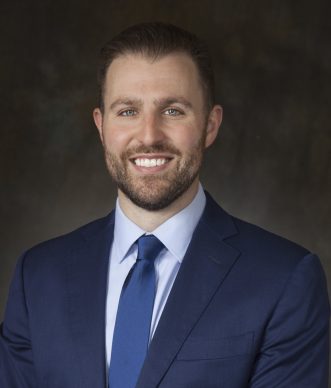Diagnosis and Treatment of Achilles Tendinitis in Wake County

What is Achilles Tendinitis?
Achilles tendinitis is a common condition of the foot and ankle that occurs when the large tendon that runs down the back of the lower leg becomes irritated and inflamed – the body’s natural response to injury or disease. Tendinitis is inflammation of a tendon.
The Achilles tendon is the largest tendon in the body, connecting the calf muscles to the heel bone. It is used to walk, run, climb stairs, jump, and stand on tiptoes. However, due to overuse and degeneration, it is prone to tendinitis. Learn more about this condition from the orthopedic specialists at Raleigh Orthopaedic here.

What Causes Achilles Tendinitis?
Achilles tendinitis is not related to a specific injury and can occur at any time. It is often the result of repetitive stress to the tendon. Factors that make tendinitis more likely to develop include:
- Sudden increase in the amount or intensity of exercise activity: For example, increasing the distance of a run every day by a few miles without giving the body a chance to adjust to more distance
- Tight calf muscles: Tight calf muscles can put extra stress on the Achilles tendon, especially when starting an aggressive exercise program
- Bone spurs: Extra bone growth where the Achilles tendon attaches to the heel bone can rub against the tendon and cause pain.
Symptoms of Achilles Tendinitis
In order to seek out the proper treatment for Achilles tendinitis, it is important to be aware of its symptoms and what you should be watching out for. If you experience a sudden “pop” in the back of your calf or heel, you may have ruptured, or torn, your Achilles tendon. See one of our foot and ankle doctors or visit a Raleigh Orthopaedic Urgent Care immediately if you think you may have torn your Achilles tendon. Common symptoms of Achilles tendinitis include:
- Pain and stiffness along the Achilles tendon in the morning
- Pain along the tendon or back of the heel that worsens with activity
- Severe pain the day after exercising
- Thickening of the tendon
- Bone spurs
- Swelling that is present all the time and gets worse with activity throughout the day
How is Achilles Tendinitis Diagnosed?
Sometimes Achilles tendinitis can be misdiagnosed as a sprained ankle. Your doctor will likely perform a physical exam to check for symptoms of tendinitis, including tests of your range of motion. They may also utilize imaging tests such as an X-ray or MRI, which can determine if the tendon has become calcified or hardened, as well as identify the presence of bone spurs.

Treatment Options for Achilles Tendinitis at Raleigh Orthopaedic
The majority of cases of Achilles tendinitis can be treated without surgery. However, even with early treatment, it may take three to six months for pain to completely subside. Nonsurgical treatment options for Achilles tendinitis include:
- Rest: Decrease or even stop activities that make pain worse. Cross-training activities such as biking, elliptical exercise, and swimming are all low-impact options that allow you to continue staying active while being treated for Achilles tendinitis.
- Ice: Placing ice on the most painful area of the Achilles tendon is helpful and can be done as needed throughout the day for up to 20 minutes at a time.
- Anti-inflammatory medications: Drugs such as ibuprofen and naproxen reduce pain and swelling.
- Physical therapy at Raleigh Orthopaedic: Raleigh Orthopaedic Therapy Services combines the latest therapy techniques with a continuous learning process, giving our patients the best in rehabilitation and care.
- Supportive shoes and orthotics: shoes that are softer at the back of the heel can reduce irritation of the tendon. In addition, heel lifts can take some strain off the tendon.
Surgery should be considered to resolve Achilles tendinitis only if the pain does not improve after 6 months of nonsurgical treatment. The specific type of surgery depends on the location of the tendinitis and the amount of damage to the tendon. When you come to see us at Raleigh Orthopaedic, your orthopedic specialist will talk you through your options for surgery and answer any questions you may have.

Achilles Tendinitis Recovery Process
The recovery process is different for each individual – the condition typically resolves after a few days of proper treatment. If you continue to put pressure on the tendon or neglect to adjust your exercise habits, your recovery time will likely increase. A tendon rupture or chronic tendinitis can worsen the issue and may require long-term rehabilitation or surgery. Our team of specialists will help you determine the best treatment plan based on your unique circumstances.
For those who have undergone surgery for Achilles tendinitis, the main factor in recovery is the amount of damage to the tendon. The greater the amount of tendon involved, the longer the recovery period. Physical therapy is an important part of recovery. Many patients require 12 months of rehabilitation post-surgery before they are pain-free.
How to Prevent Achilles Tendinitis
It may not always be possible to prevent Achilles tendinitis. However, there are measures you can take that will reduce your risk. If you are starting a new workout routine, it is important to start slowly and gradually increase your activity level and intensity. Wearing proper shoes that fit comfortably and provide support throughout the day, especially when exercising, can also protect against Achilles tendinitis. Stretching the calf muscle and Achilles tendon daily can improve flexibility, while working out the tendon can improve strength. Improving flexibility and strength in the Achilles tendon is a great way to keep the tendon healthy.

Learn More About Foot and Ankle Treatment at Raleigh Orthopaedic
Your well-being is important to us. Raleigh Orthopaedic is Wake County’s oldest and most experienced orthopedic practice, serving the Triangle and surrounding regions of central North Carolina since 1919. We are proud to help those throughout Wake County and beyond get back to living and moving more comfortably, no matter what type of orthopedic injury or condition you are facing. To get started with Raleigh Orthopaedic, give us a call or book an appointment online today!




